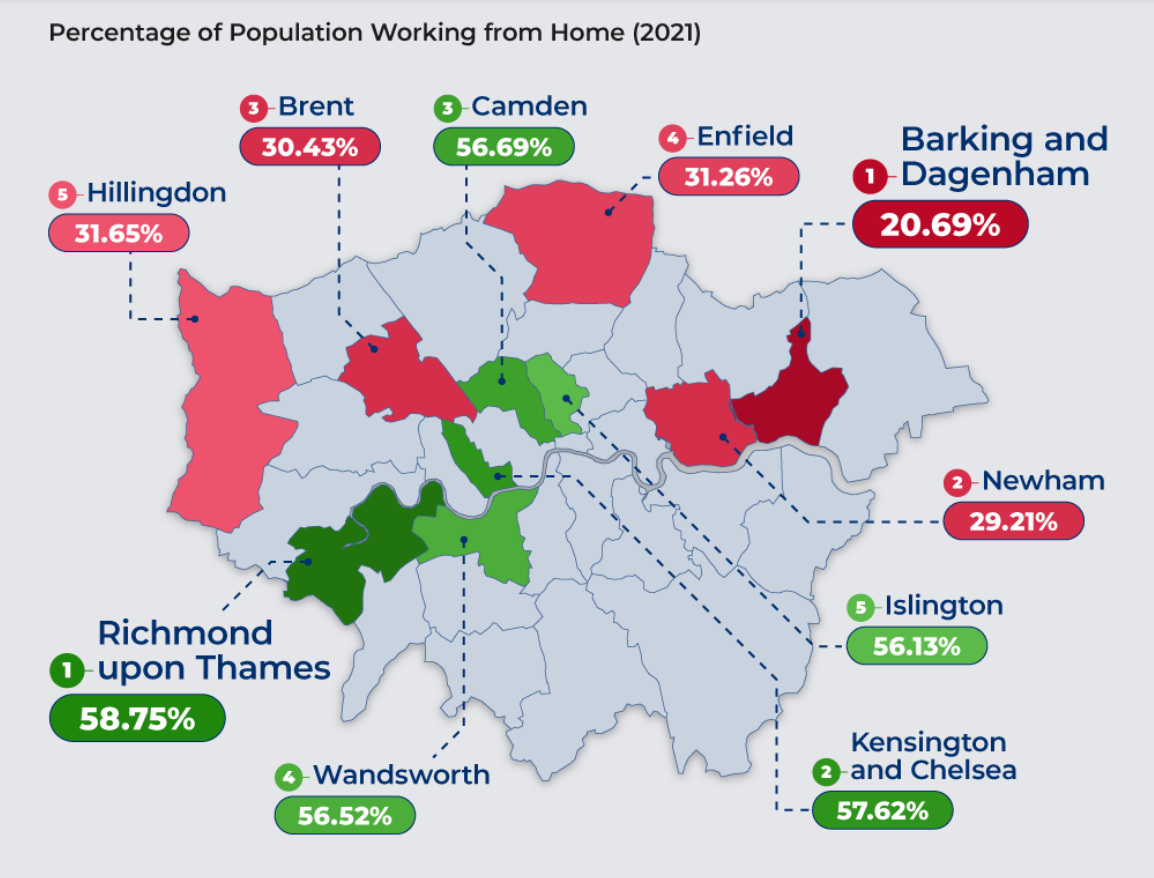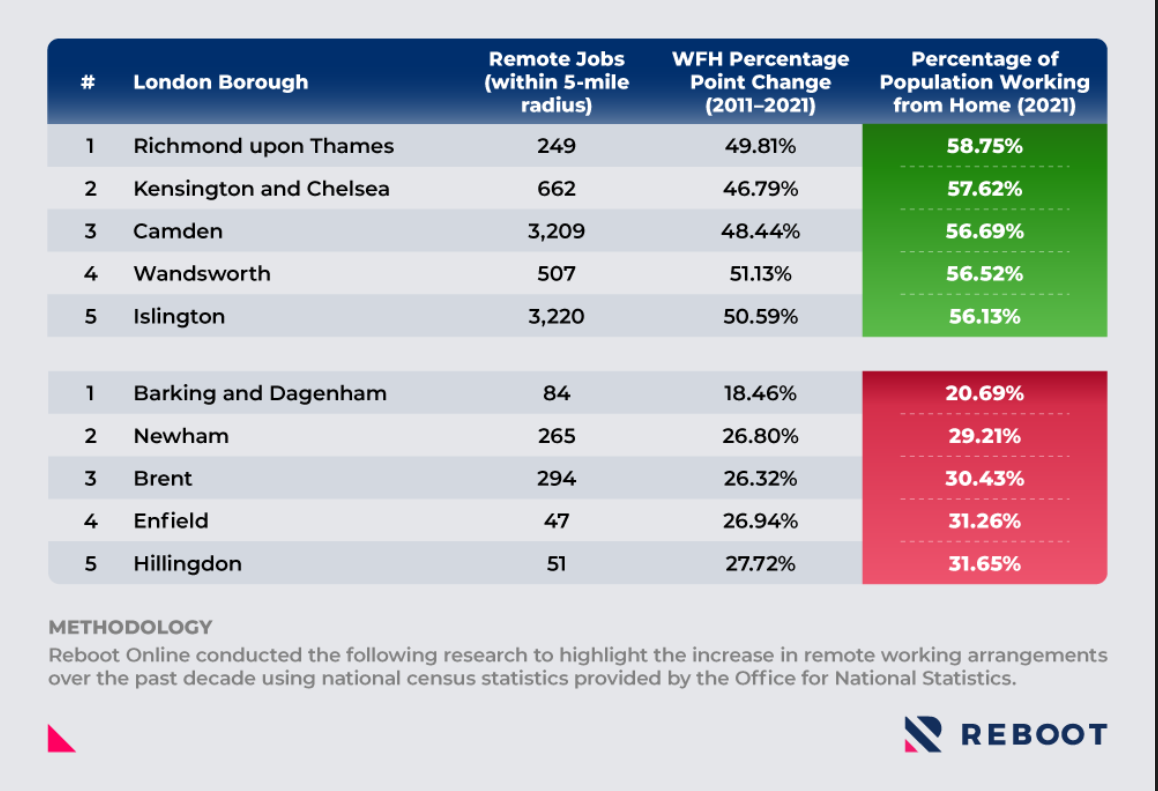
Reboot Online compiled the data, breaking down the percentages by area as well as comparing them to the 2011 rates. With the help of Indeed, Reboot also worked out the percentage of remote jobs within a five mile radius of each local authority in London.
Richmond upon Thames leads the pack, where 58.75 per cent of people now carry out their jobs remotely. Ten years ago, in 2011, that number was under 10 per cent.

Credit: Reboot Online
In second place was Kensington and Chelsea, marginally behind with 57.62 per cent of workers doing their jobs from home.
Camden came third at 56.69 per cent, however with 3,209 remote jobs in a five mile radius, Camden had considerably more work from home offerings than both Richmond and Kensington and Chelsea combined.
Wandsworth was fourth and Islington was fifth, at 56.52 and 56.13 per cent, respectively. Despite coming fourth and fifth, it was Wandsworth and Islington that had the largest increase in people working remotely compared to 2011. Islington, with 3,220 remote jobs in its five mile radius, had the highest offering.
At the other end of the spectrum, only 20.69 per cent of people work from home in Barking and Dagenham, making it far and away London’s lowest rate.

Credit: Reboot Online
Newham 29.21 (per cent) and Brent (30.43 per cent) were the second and third lowest rates, while Enfield and Hillingdon round out the bottom five. In each of these boroughs, over two thirds of people still commute to work.
As well as the census and the Office for National Statistics, Reboot used the UK Data Service to acquire census variables around the distance travelled to the workplace by surveyed participants. This was done for both 2021 and 2011.
Each of the percentages was worked out as a proportion of the working population, which was itself calculated as the total number of respondents subtracted by the number of respondents that were unemployed.
Reboot also notes that Covid-19 measures still in place in 2021 will have affected work from home rates in the latest census.




